Malazan CLIP features
This is starting to consume a serious amount of my work time, not to mention the rest of the day. I need to talk about it. And show off, of course.
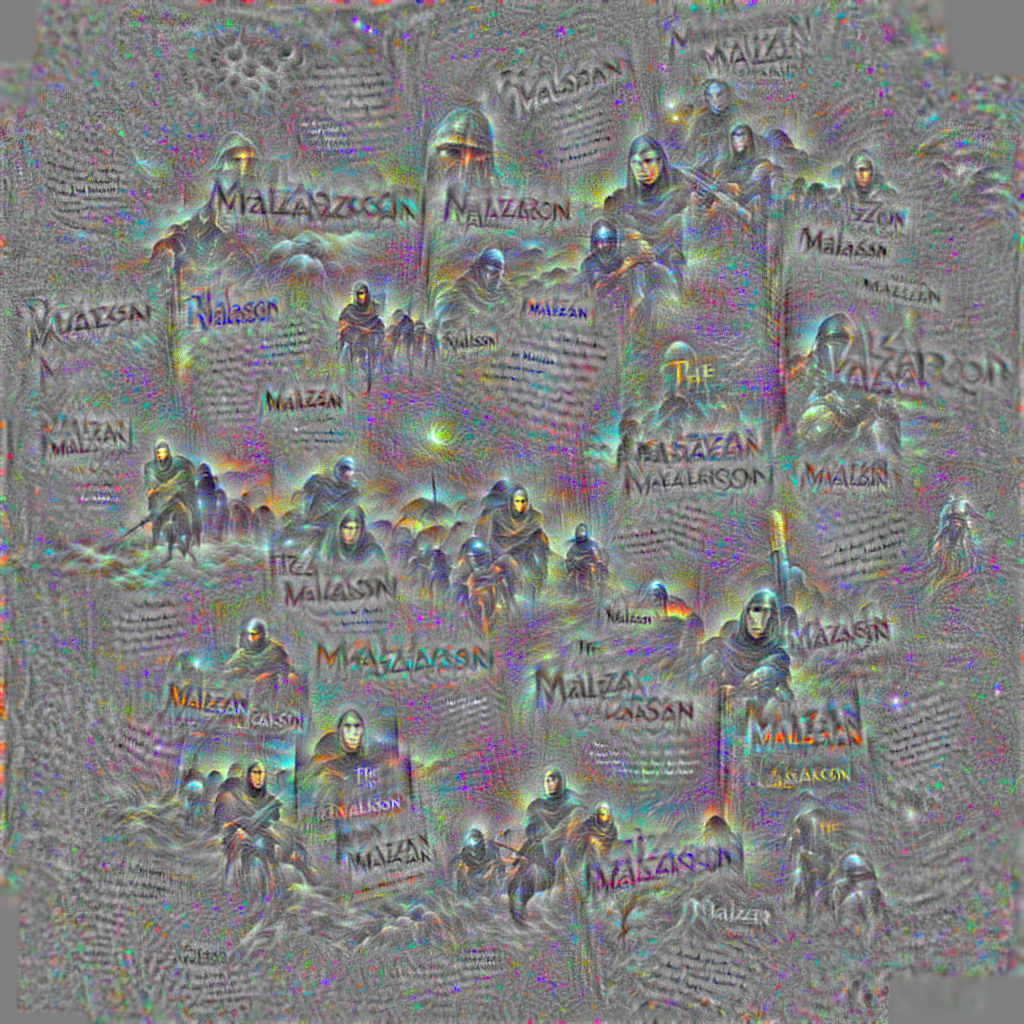
This is what drives CLIP’s image encoder to match with the features of the text encoder, given the word Malazan. You can read about OpenAI’s CLIP network and feature visualization in general all over the web and i’m too lazy to put links right now, except for images.
CLIP’s image encoder has an input window of 224x224 pixels. To render high resolution images the input window is placed randomly all over the place.

In the image above, the rotation is also randomized a lot. Obviously, CLIP associates Malazan with fantasy book covers. Maybe even specific ones. From the rotation it gets inspired to draw those magical mandala things. They might be from any fantasy book but i think it’s from the Malazan series. Although CLIP never spells it right. Let’s say, it’s enough for fan.
The rotation also seems to make those soldiers more of the fighting sort.
And the minutes pass by and i think, just one more picture! Then i should really do something else. And more minutes pass by.
So now i can fill billions of pixels with the malazan pattern in some way but i find it desirable to let CLIP also control the whole composition, not only little input windows. These images are 1024² pixels so CLIP’s 224² input window really just sees a small section at once. If we scale down the image randomly before feeding to CLIP, it looks like this:
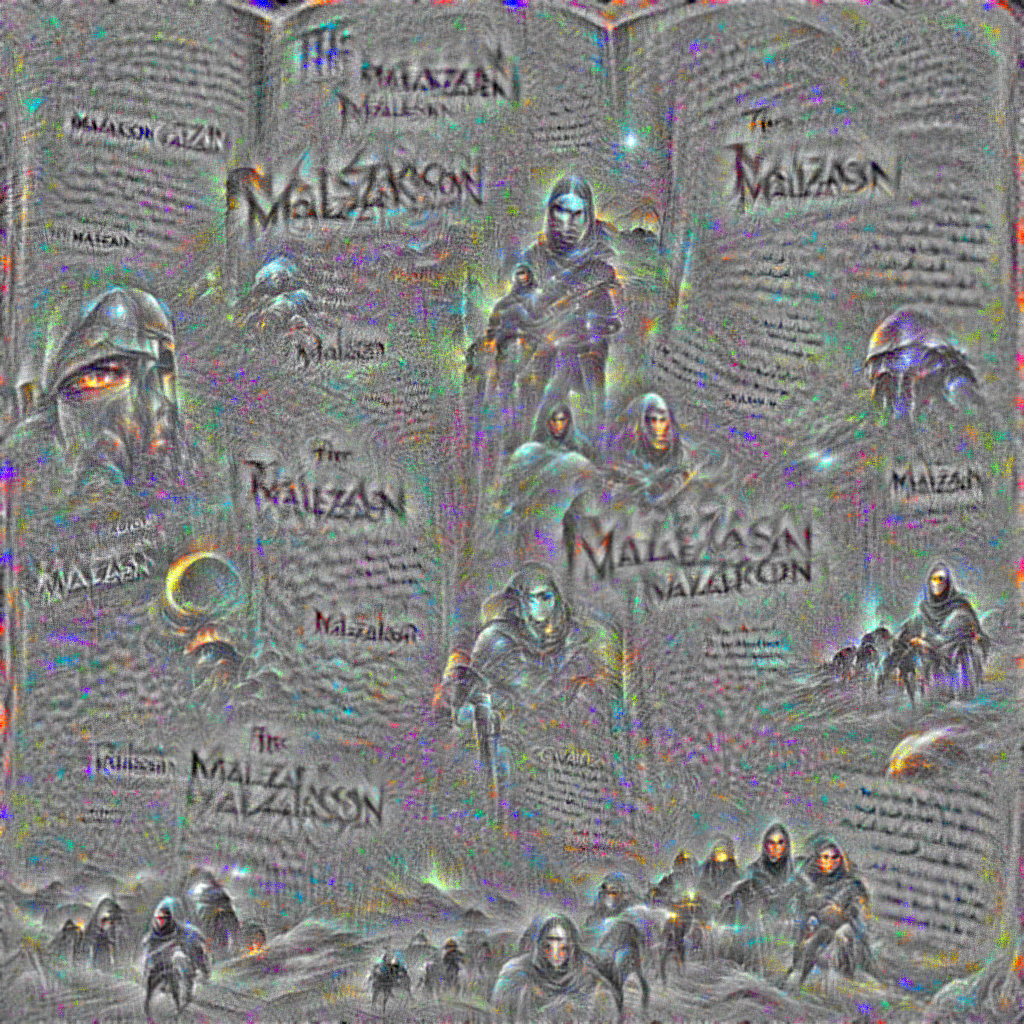
The section with the people at the bottom looks really cool. It’s much larger than the CLIP input so the scaling seems to help. Think of it as resizing a small resolution image and then fine-tuning the details. Since a couple of days now, i’m completely and utterly amazed by what CLIP is capable of.
By the way, it’s even more amazing what libraries like pytorch are able to do. Do you remember the old times when one had to manually derive the back-propagation gradients? Today we just stack a couple of networks, insert a couple of transformations in between, add a gaussian blur, randomize stuff in each training step and pytorch calculates the gradient in no-time.
And another ten minutes later…
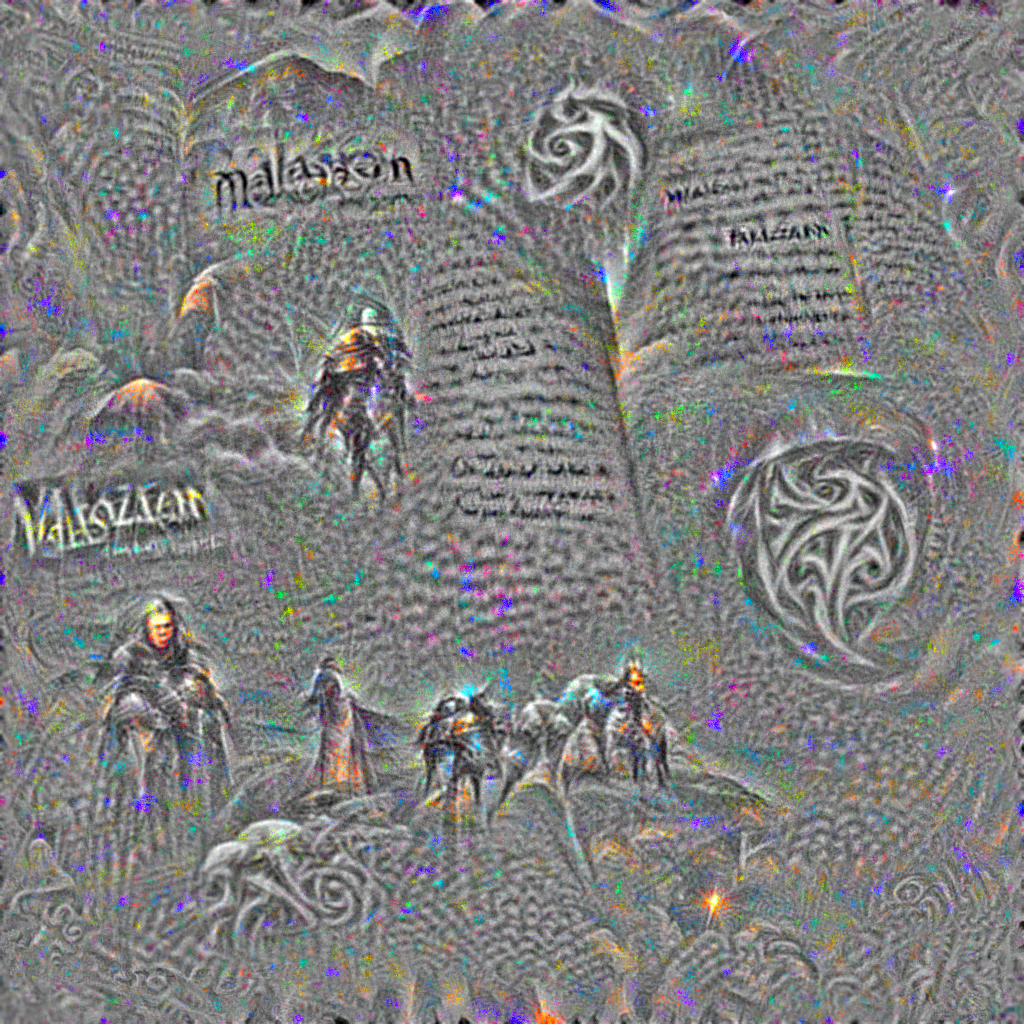
Here, each input window has been transformed by a random perspective projection. Note that not so much Malazan has been tried to write down. And it failed even more where it was tried. The perspective book pages are also kind of nice.
There is probably a way to get rid of the text. It’s a quite interesting topic too. Via linear probing of the output features tied to some classic image recognition data-set, one can determine specific weight surfaces for text, texture and a lot of other things. Once determined, those weights can be used to raise or lower the training loss during image rendering.
Let’s keep the random zoom feature and add some variation. For example, we can test a chosen CLIP window for multiple features at the same time and apply the one that matches best.
Trying Malazan and Lord of the Rings:
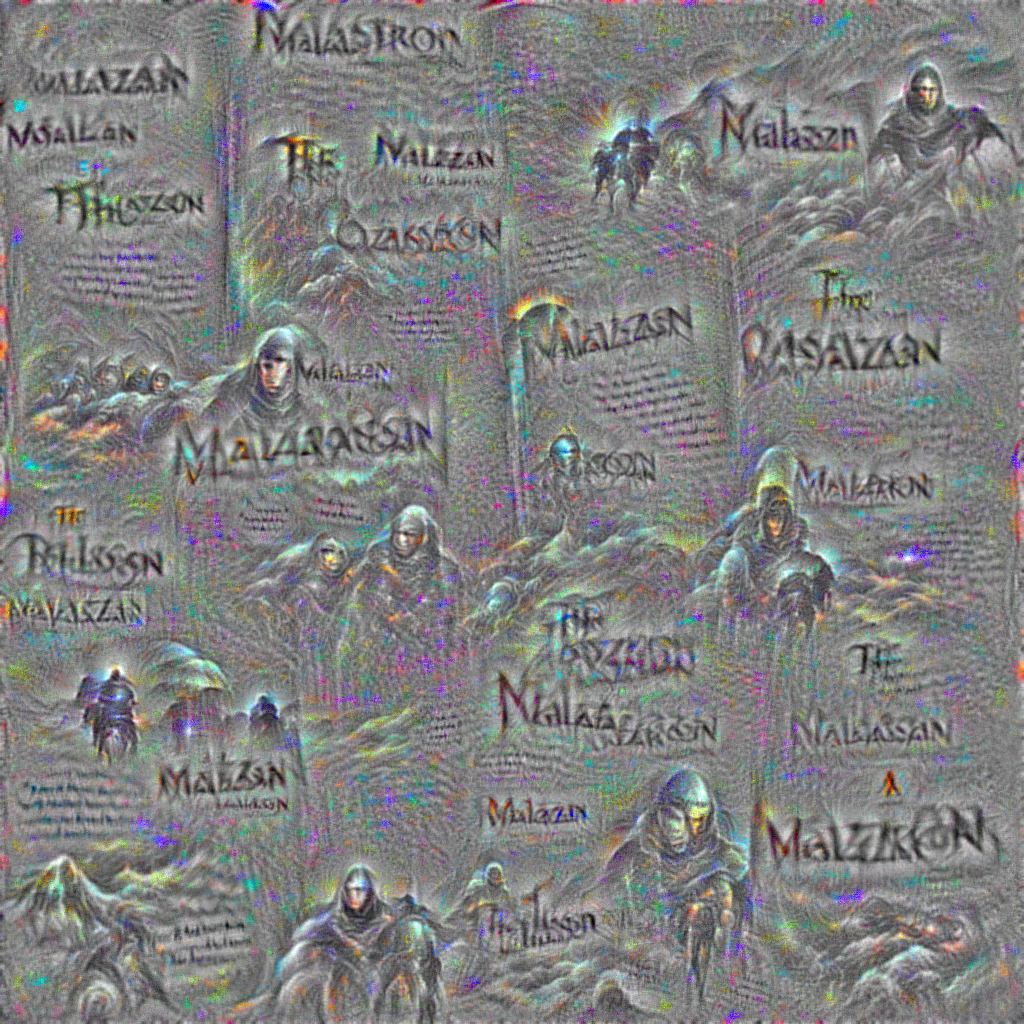
Okay, it tried to smirch it into the book title but apart there is not much difference. This also highlights the fact that the Malazan Book of the Fallen is much more complex and absorbing than Lord of the Rings.
Let’s try a few other texts:
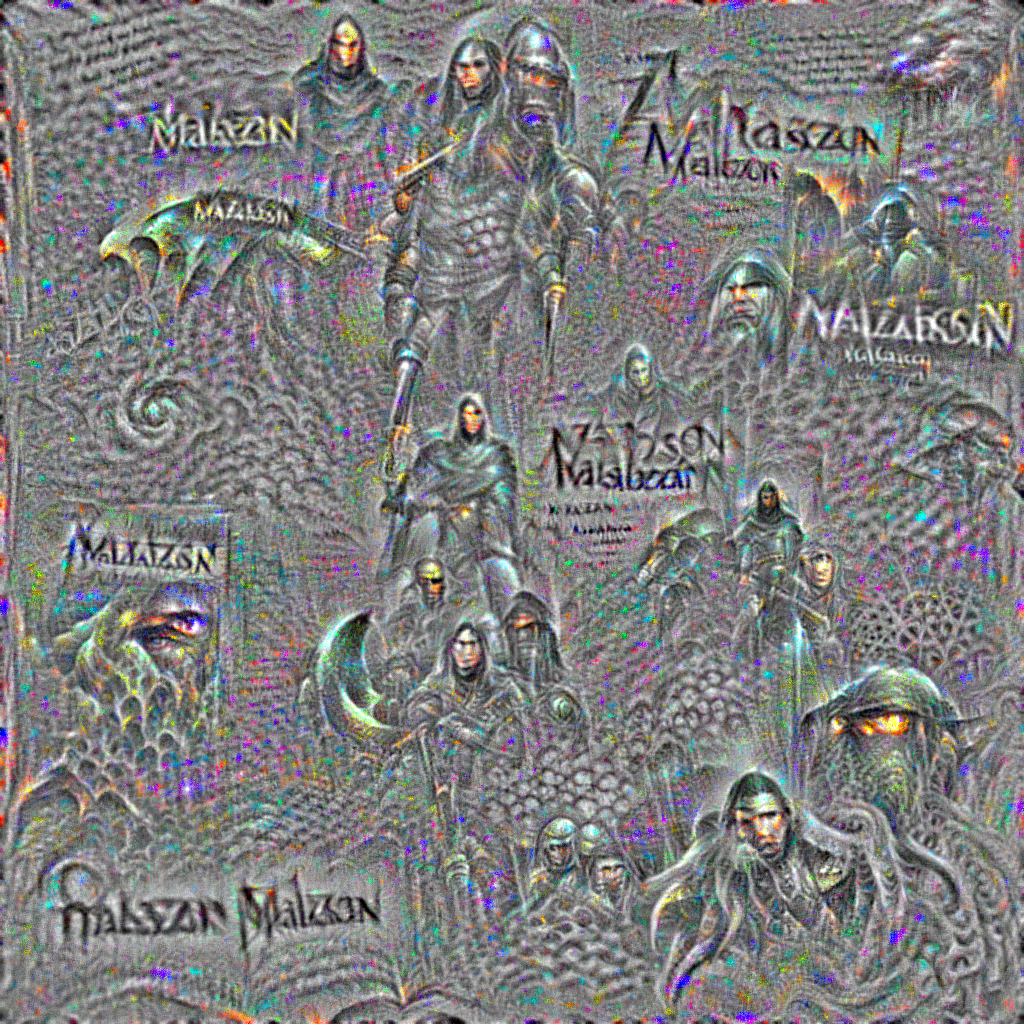
Here are the number of training frames that each text feature received:
malazan : 879 (29.46%)
sword : 665 (22.29%)
cthulhu : 435 (14.58%)
metal armour : 575 (19.27%)
stairs in a dungeon : 217 (7.27%)
leather armour : 144 (4.83%)
warrior : 69 (2.31%)
Amazing! These 10 minutes where really worth the time! Cthulhu seems to be known well to the CLIP. I’ll add the perspective randomization to the Malazan target to remove the titles a bit and rerun the experiment:
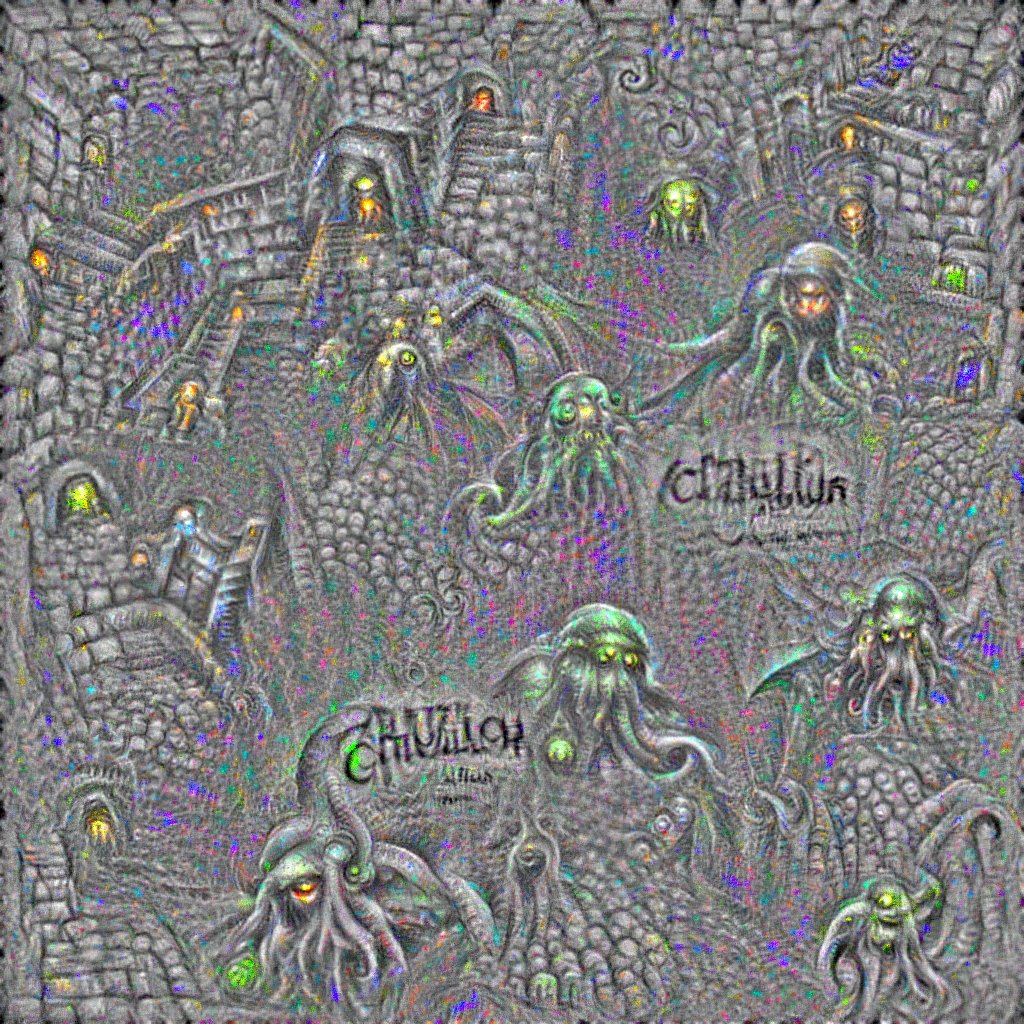
Some rendering artifacts have triggered the stairs in a dungeon a lot and they got a large amount of representation.
Here’s a Cthulhu-only image:
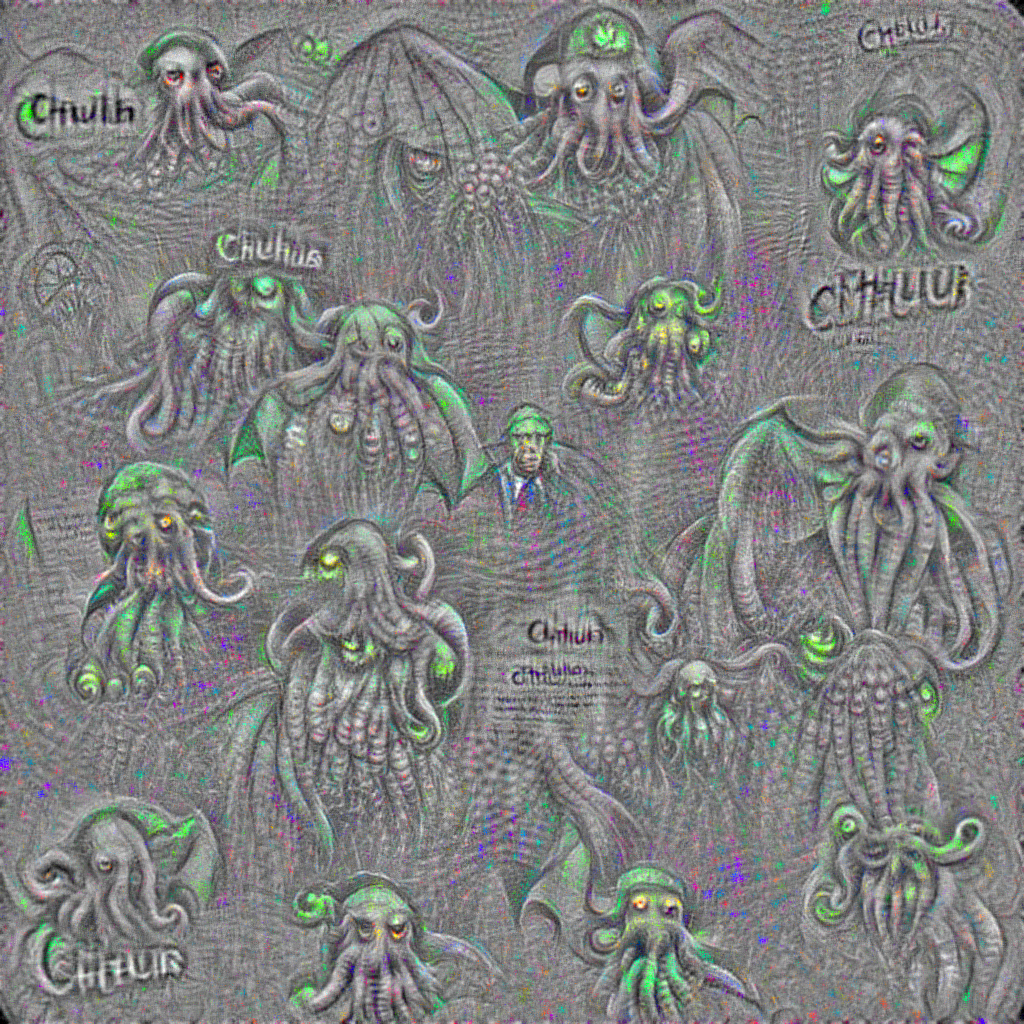
There’s a guy with a suit in there? Must be Bob Howard from The Laundry Files?
Back to the idea of composition
In the following images, those detail training steps are combined with training a resized CLIP window that fits the whole image. Of course this is quite blurry but we can turn it off at some point during training and let the detail training handle the rest.
Here’s one such blurry full-frame image for the text Malazan landscape, by which CLIP does not seem to understand views of nature but rather characteristic fantasy book maps.
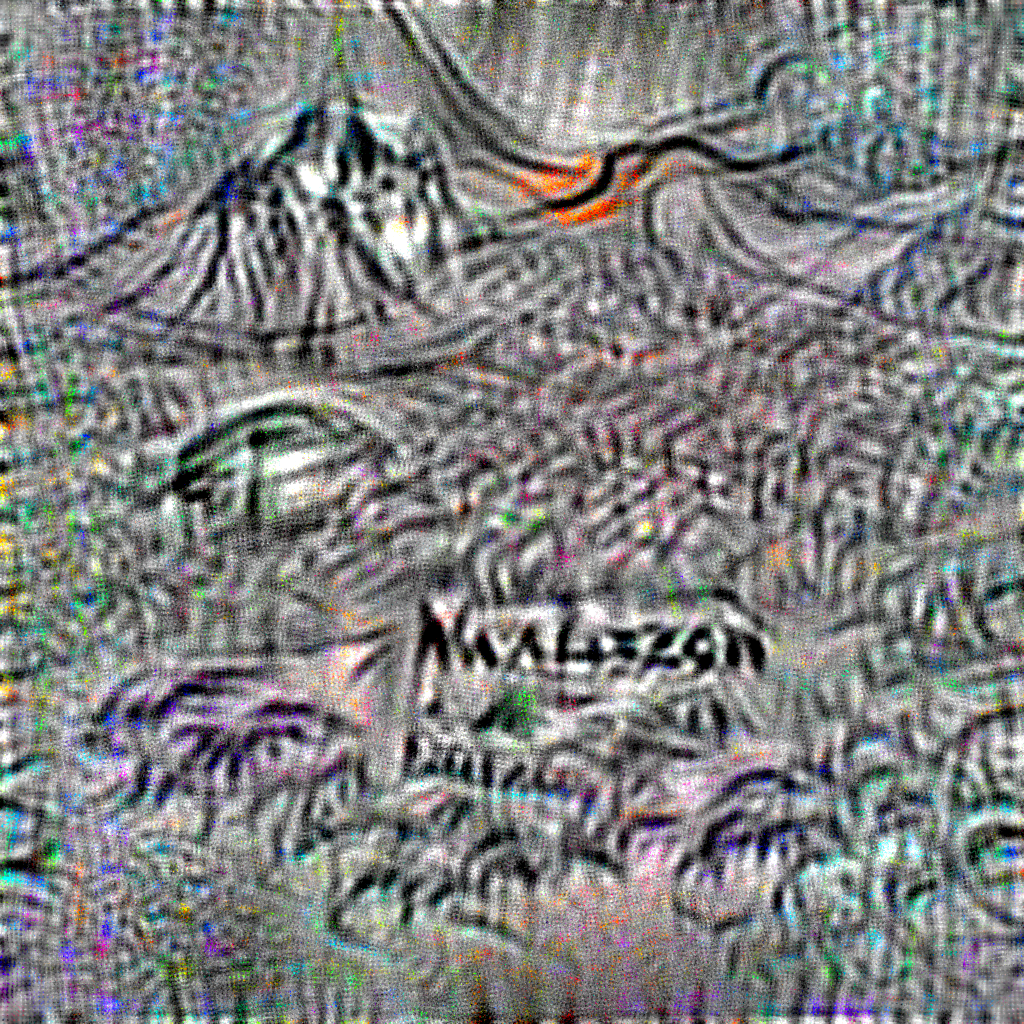
So the quality is terrible and there are a lot of artifacts and glitches that come from either the convolutional network layers in CLIP or from the methods trying to minimize those artifacts. Mainly random translation and gaussian blurring.
But the final image, just some 7 minutes later!
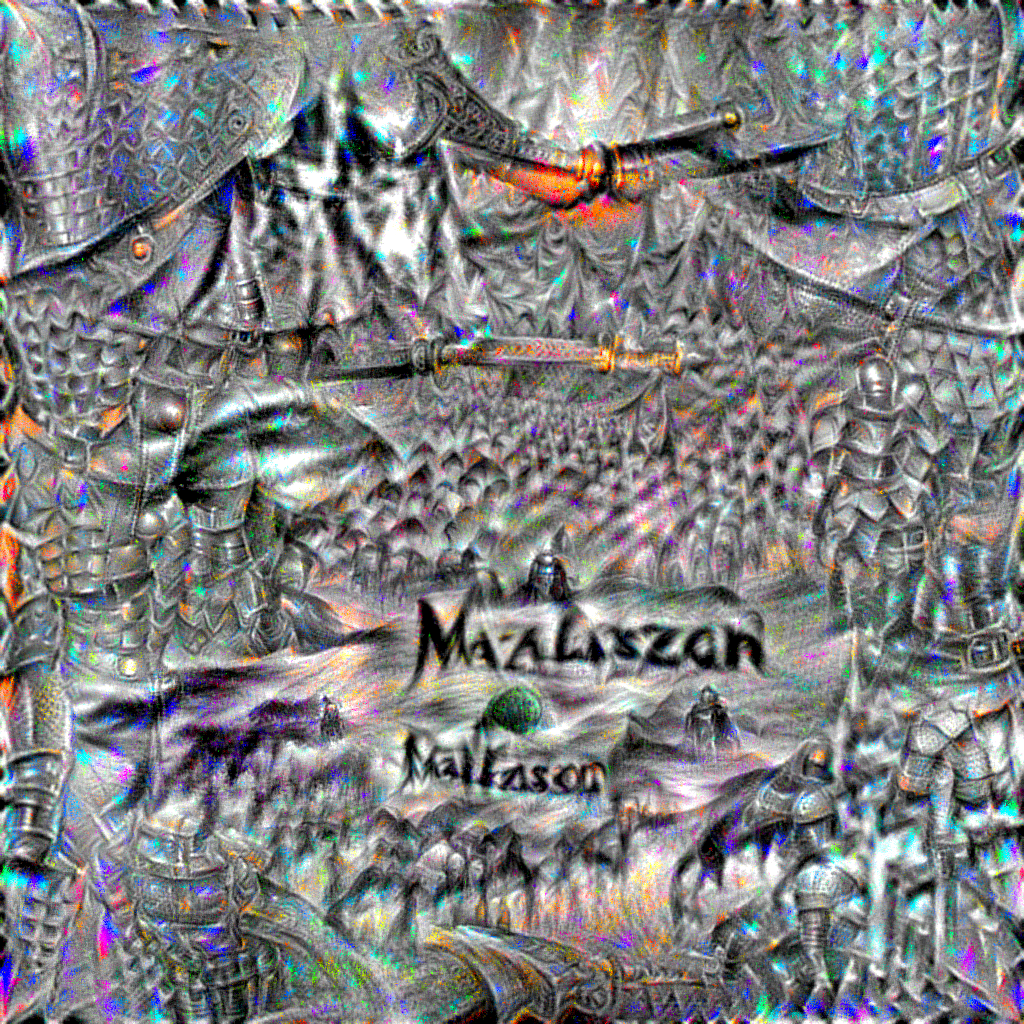
It has some global structure as well as a lot of tiny details. It’s not completely rational but that’s okay with my fantasy image generation desires. Note that it did not find good detailed matches for the mountains and the bigger letters. Also there’s a bit too much swords in there and a bit too much crayon drawing for my taste.
In the following run, i kept Malazan landscape for the global composition but only allowed Malazan for the details:
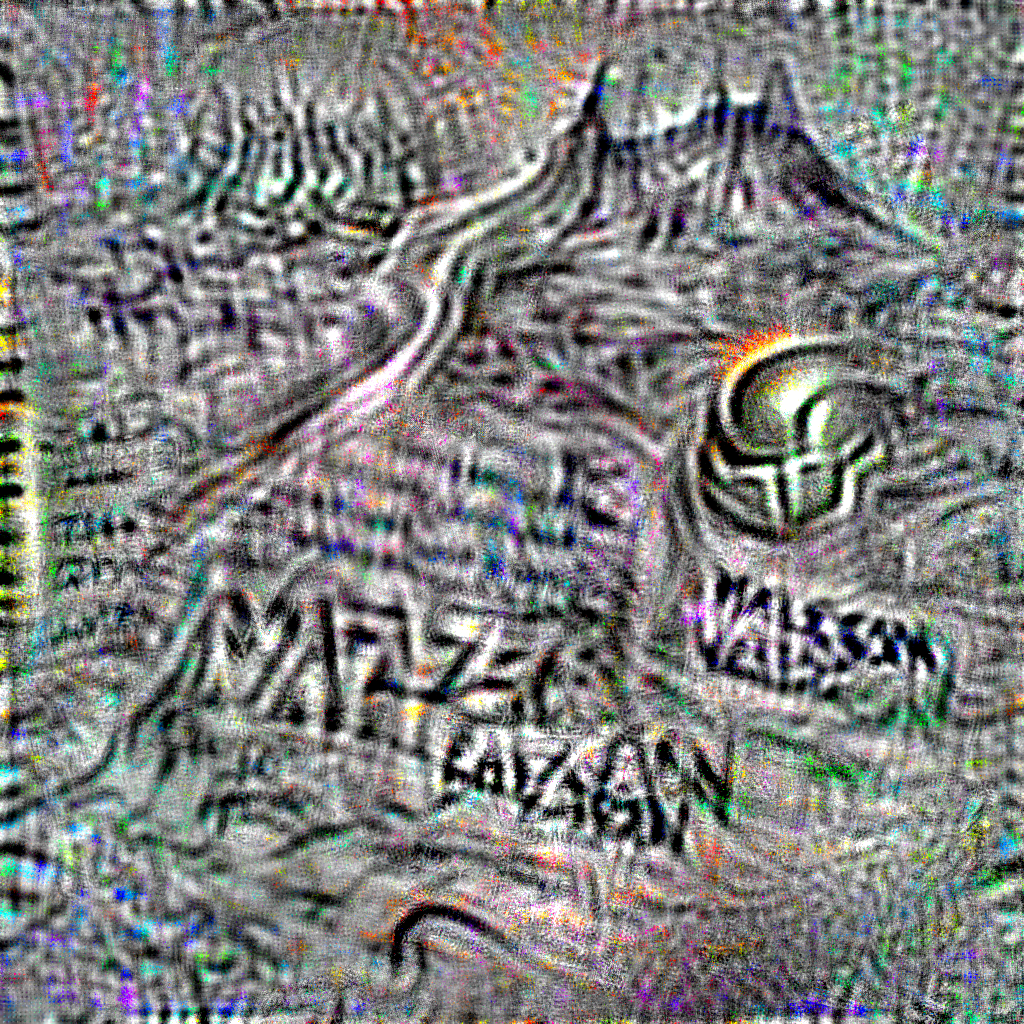
Structurally it’s already a nice snapshot. Now the details:
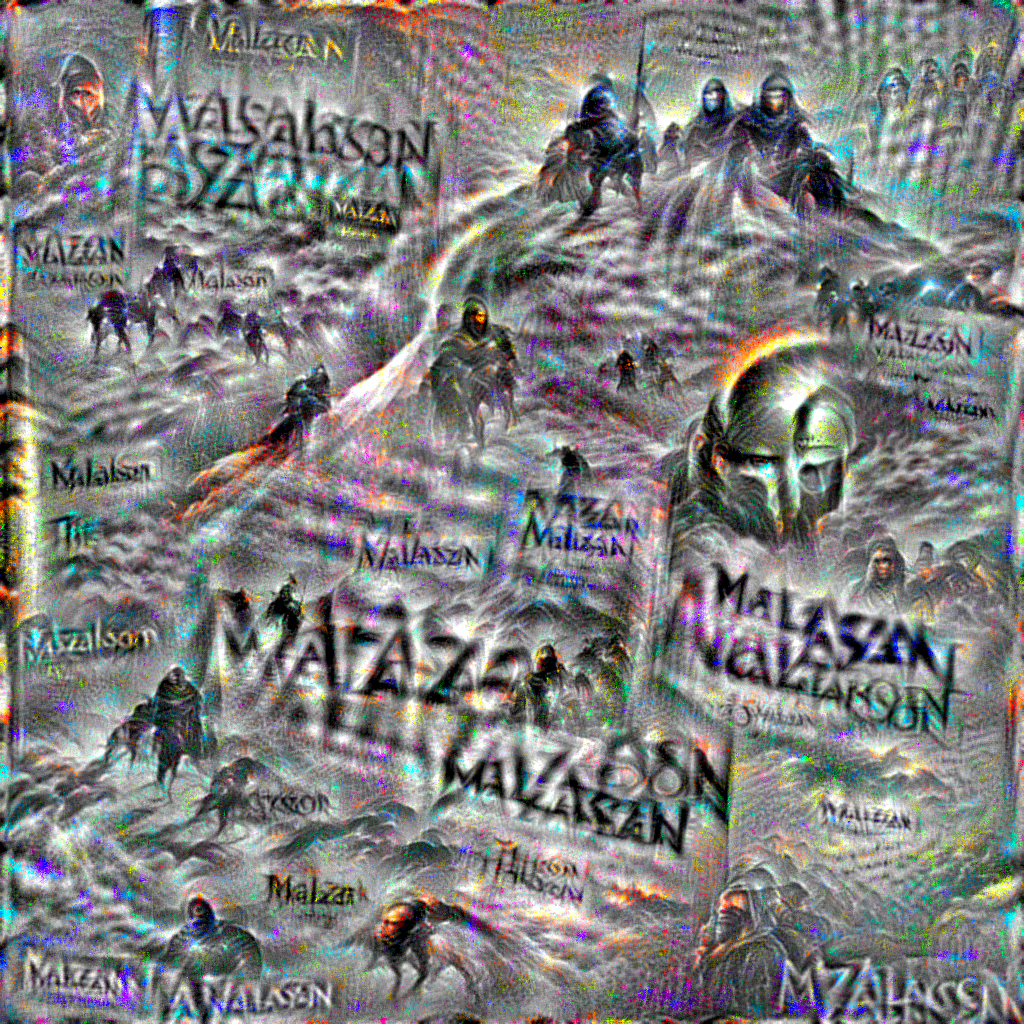
I really need to figure out how to remove text if i want to go further in the Malazan universe!
Here’s an example from a different universe where the big-blurred composition vs. unrelated details worked quite well. It’s a combination of a photo of two androids walking through a futuristic city and stuff like close-up of a sad robot, close-up of various machinery parts and so on.
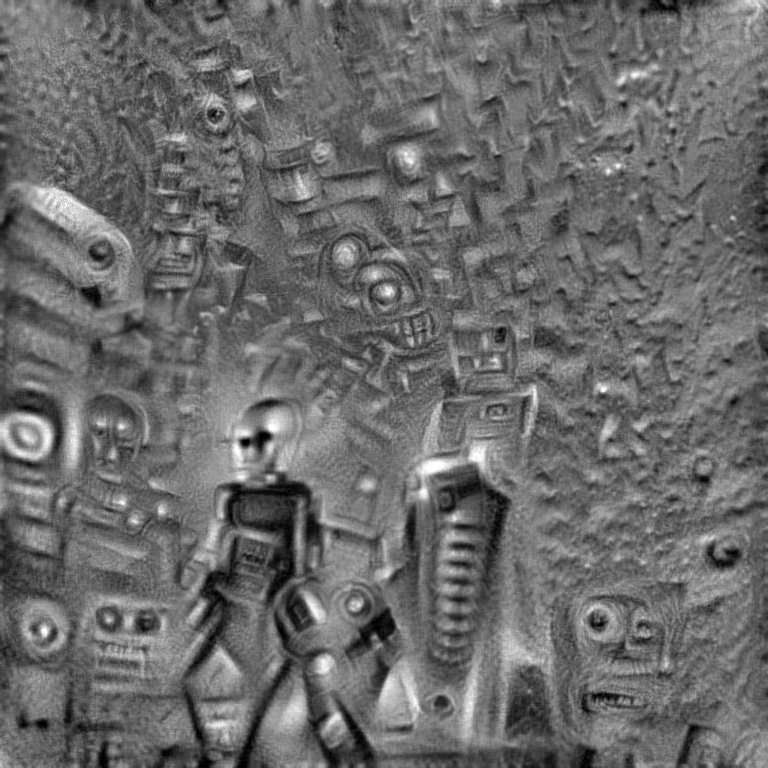
I will explore more. There’s a couple of technical and artistic problems that i want to fix. But, you know, it takes time..